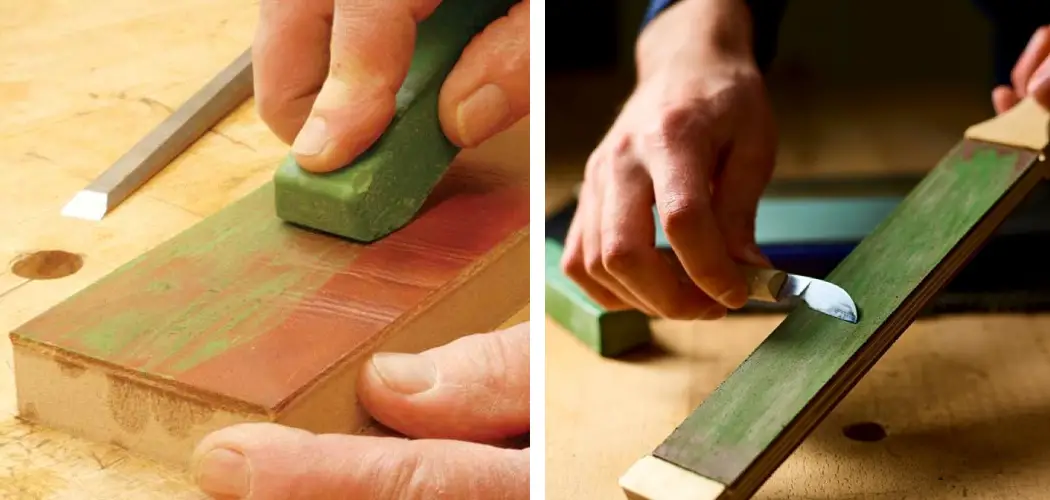Are you looking to take your chisel-sharpening skills to the next level? If so, investing in a high-quality leather strop is an excellent way to enhance your technique. By running the chisel blades along the leather surface of a good quality strop, you’ll be able to make them razor-sharp and smooth out any imperfections that may have been created during honing with a stone or block.
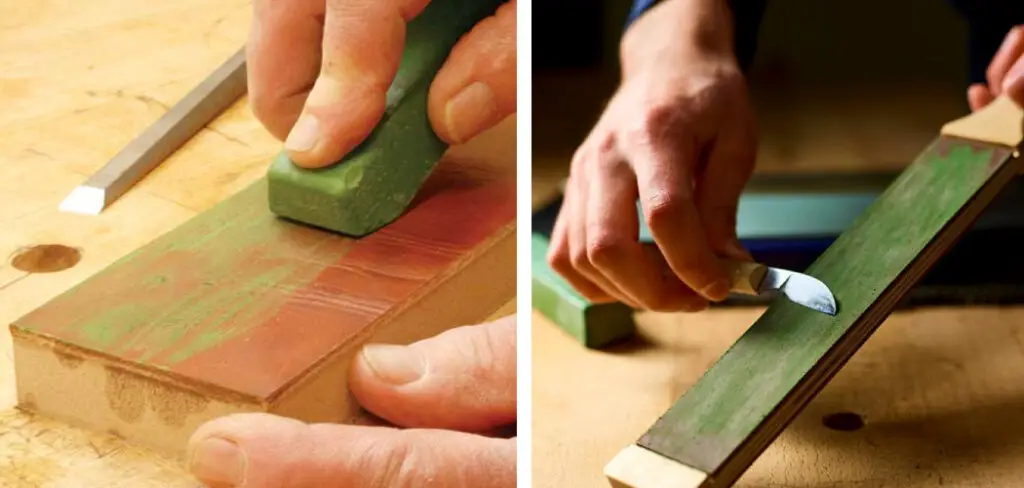
In this blog post, we dive into how to use a leather strop for chisels and give our top tips for achieving maximum results when it comes time for honing. So grab yourself some good-quality abrasive compounds, and let’s get started!
Which Side of Leather to Use for Stropping?
When stropping a chisel, one of the most important things to consider is which side of the leather to use. The rough side of the leather should be used when stropping chisels as it provides more friction and helps remove any burrs left on edge. It’s important to make sure that you don’t use too much pressure when stropping, as this can cause the blade to become too hot and potentially ruin it.
Stropping a chisel is an important step for ensuring that your tools remain sharp and in good condition. When you use the rough side of a leather strop, the friction helps remove any burrs or imperfections from the edge of the chisel. Stropping also helps to polish and refine the edge, giving it a sharper edge that will make your cuts more accurate.
It’s important to remember that when stropping a chisel or any other tool, you should always use light pressure and take care not to apply too much force, as this could damage the blade. Additionally, it’s important to use the correct stropping compound for the type of steel your chisel is made from, as this will help to keep it in good condition and increase its longevity.
With proper care and regular stropping, your chisels will remain sharp and ready for any job you might have!
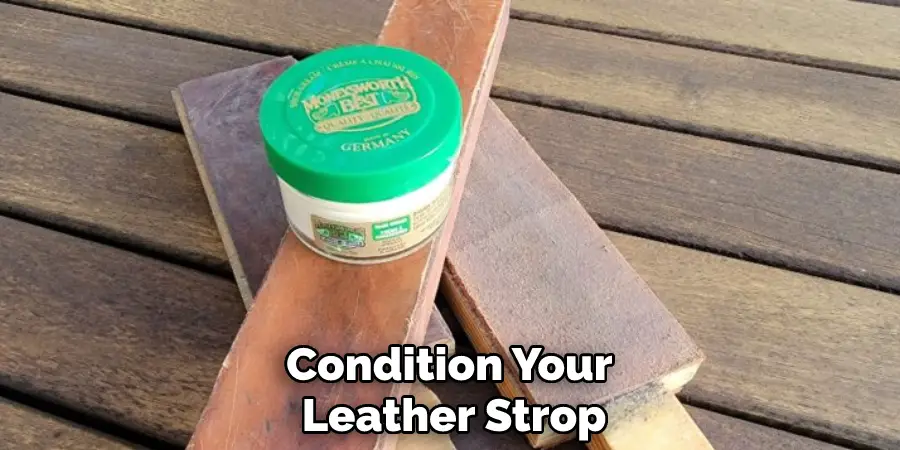
10 Methods How to Use a Leather Strop for Chisels
1. Condition the leather:
Before you start stropping, it’s important to condition your leather strop. This will help to ensure that the surface is smooth and even, making it easier for the chisel blade to slide across as you sharpen it. To condition the leather, rub it with a small amount of mineral oil or neat’s-foot oil. However, be sure not to use too much oil. Otherwise, it can gum up the leather and make it difficult to work with.
2. Choose a Suitable Abrasive Compound:
Before starting, always select an appropriate abrasive compound for the type of steel your chisel is made from. Different compounds can be used depending on the blade hardness and type of steel used. For example, Diamond spray is used for hard steels, while Chromium oxide compounds are better suited for softer steel blades.
In most cases, fine abrasive compounds should be used, such as 0.5 microns or 1.0 microns for chisels with a mirror finish.
3. Apply the Compound onto the Leather:
Gently rub the abrasive compound into the leather until it’s evenly distributed over the entire strop surface. Make sure not to use too much compound, as this can cause clogging or uneven honing results. If too much compound has been applied, simply wipe off the excess with a clean cloth. If you’re using a honing compound with a finer grit, you can skip this step.
4. Secure the Chisel in Place:
Place the beveled side of the chisel onto the strop and secure it in place using tape or clamps. This ensures that it won’t move during sharpening, which can lead to uneven honing results. Additionally, it is important to remember to keep the angle of the bevel against the strop consistent throughout.
Though it is a good idea to hold the chisel in place as you sharpen, this can cause more problems than it solves since it creates an inconsistent angle. However, you can stop and adjust the angle as needed throughout sharpening.
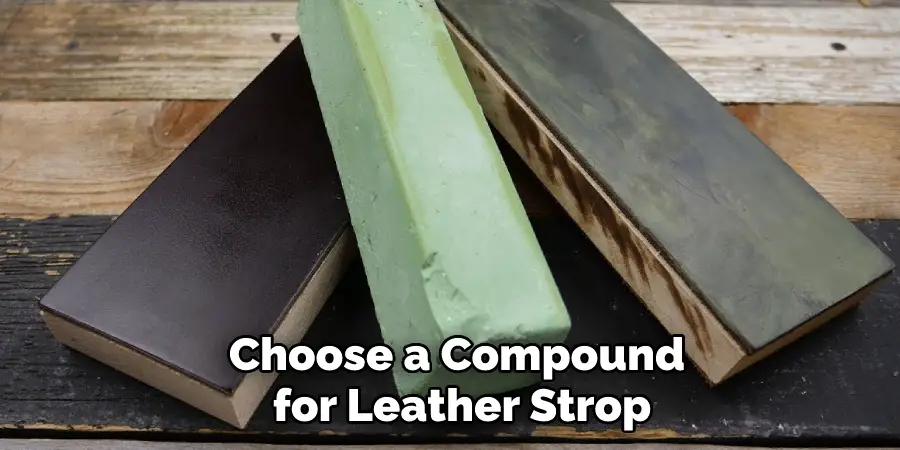
5. Begin Stropping:
With light pressure, begin moving the blade up and down over the leather strop. You should aim for an average of 10 strokes per pass, with each stroke starting at one end of the strop and ending at the other end. Use a consistent pace throughout, as this will help you to achieve a consistent edge. When using a honing compound, apply some to the strop before each pass.
6. Change Directions after Every Few Passes:
After completing several passes in one direction, flip the chisel over and begin stropping in the opposite direction. This helps to ensure that both sides of the blade are evenly honed and sharpened. When you flip the chisel, make sure to switch hands as well. This helps distribute the pressure evenly and improves the overall results of the stropping process.
7. Rinse off Excess Compound:
Once you’ve completed your stropping, rinse off any excess abrasive compound from the strop using warm water and a soft cloth. This is an important step since the abrasive compound can be transferred to other materials, potentially causing damage.
Once you’ve removed all of the excess compounds, allow the leather strop to dry completely before using it for another honing session. Although strops are generally resilient to water, it’s best to avoid getting them wet if possible.
8. Clean the Blade:
Before you finish up, use a clean cloth to wipe down the blade of any remaining grit or oil residue from the strobing process. Make sure not to leave any residue on the blade, as it can cause rust or other damage over time. Once you are done, you should have a sharp and well-maintained chisel ready for use.
If you continue to use a leather strop regularly on your chisels, you will ensure they remain in good working condition for many years. With the right care, your chisels can last a lifetime.
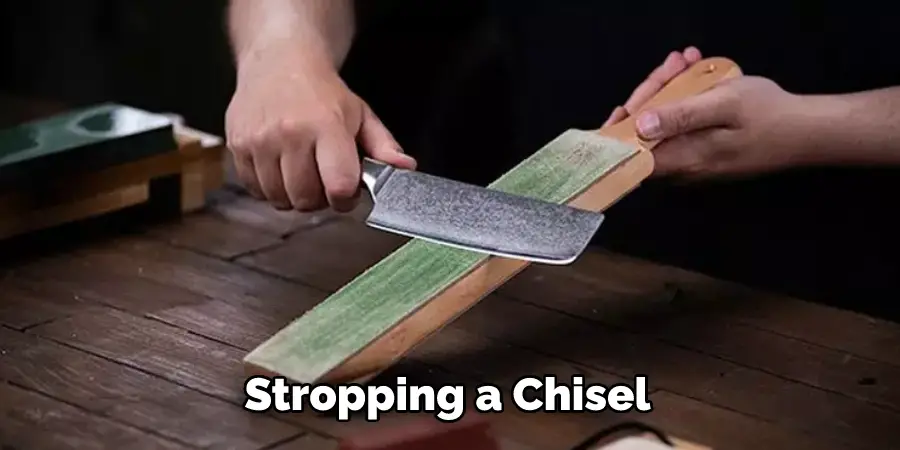
9. Inspect Your Work:
Take some time to inspect your work and make sure that it meets your desired results before storing away your chisel for later use. If you find that your chisel still needs some work, go back and repeat the previous steps with more passes or a different type of abrasive.
Remember to check your knife frequently for spots that may have been missed and take the necessary steps to correct them. With regular maintenance, you can keep your chisels sharp, safe, and in top condition for all your woodworking needs.
10. Store Safely:
To prevent accidental damage or rust, store your chisel in a clean, dry, and safe place. This will help ensure that it is always ready for use. Additionally, it is also recommended to store strop in a separate dry place and away from any moisture. This will help to keep the leather supple and in good condition for the long term.
However, some strop manufacturers provide a storage pouch for their strops, making them a great option.
By following these simple steps on how to use a leather strop for chisels, you’ll be able to easily hone and sharpen your blades to a professional-level finish. With regular use, you’ll notice that not only does it become easier to maintain sharp edges, but also the amount of time required for honing will be significantly reduced. Enjoy your sharpened blades and happy stropping!
Things to Consider When Using a Leather Strop for Chisels
1. Quality of the Strop:
Many people overlook the importance of using a good-quality leather strap for chisels. A quality strop should be made of thick, luxurious leather and be soft to the touch. The leather should also have been tanned properly so that it won’t crack or tear easily. It’s also important to make sure that the leather hasn’t been treated with any chemicals that might react with the metal of your chisel.
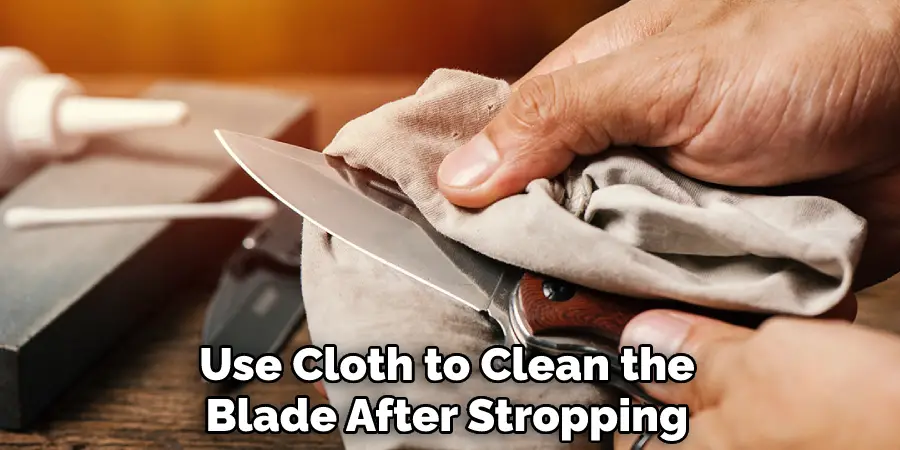
2. Speed of the Stropping:
When using a leather strop for chisels, it’s important to remember to not apply too much pressure or move the chisel too quickly. Too much pressure can cause the leather to be worn down and ruin its ability to sharpen your chisels. The best results come from lightly polishing the edge of your chisel in one direction for short, smooth strokes with even pressure.
3. Type of Compound:
The type of compound you use on your strop is also important when stropping chisels. Generally, it’s best to use a mild abrasive such as white diamond paste or green chromium oxide compound since they are capable of removing burrs from steel without damaging it further.
It’s also important to note that some compounds create better results when used for specific types of steel, so do your research and choose the compound that best suits your needs.
Conclusion
If you use a leather strop for your chisels, you’ll notice a difference in the sharpness and quality of your cuts. Be sure to invest in a good-quality strop, and take the time to care for it properly. With proper use and care and following how to use a leather strop for chisels, your leather strop will last for years and help you create finer woodwork pieces than ever before.

